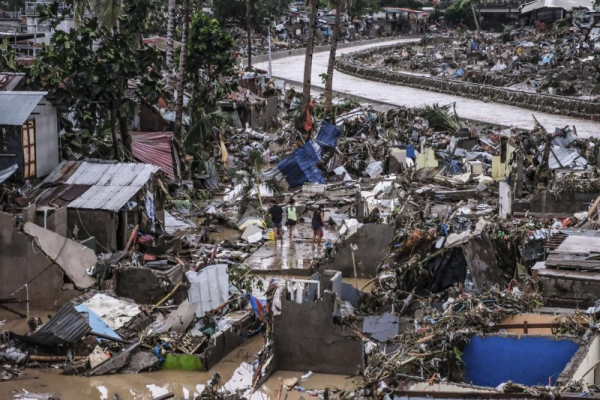

1 of 2 | The Philippines is bracing for its second typhoon strike in a week as Typhoon Fung-Wong aims for the archipelago on Sunday. The second storm is expected days after Typhoon Kalmeaegi decimated parts of Talisay City, Cebu Province, and other areas after making landfall on Tuesday. Photo by Juanito Espinosa/EPA
Typhoon Fung-Wong slammed ashore on Aurora province in Luzon, the Philippines most populated island Sunday evening, prompting the evacuation of nearly a million people. At least two are dead.
The storm hit land as a super typhoon with sustained winds of 115 m.p.h. and gusts of up to 143 m.p.h.
The country’s meteorological service had warned of a high risk of life threatening storm surges from the “very intense typhoon.”
Fung-Wong, known locally as Uwan, is the second major storm to hit the area in recent days.
The Philippines are recovering from Tuesday’s strike by Typhoon Kalmaegi, which killed nearly 200 in the Central Philippines, plus another five in Vietnam, CNN reported.
Kalmaegi was the 20th cyclone of 2025 and was the deadliest so far as it passed over the Philippines and made landfall eight times across the archipelago before moving on to Vietnam. Fung-Wong may prove stronger.
Civil defense officers reported that one person drowned after Fung-Wong made landfall. Firefighters recovered the body of a woman trapped beneath debris in Catbalogan City.
Nearly 300 flights were canceled as Fung-Wong forced the closure of several airports.
The storm was expected to weaken after making landfall, but meteorologists said it is likely to remain a typhoon as is passes over the province through at least Tuesday.
The Metro Manila Disaster Risk Reduction and Management Council issued its highest alert in anticipation of the storm making landfall and lashing the Philippines with high winds and heavy rainfall from Sunday through Tuesday.
“This is our highest state of readiness,” Civil Defense Director George Keyser said during an emergency meeting before Fung-Wong made landfall.
“The volume of rain could be unprecedented, even if the eye makes landfall far north,” Keyser said.
He said forecasters are unsure of how much rain to expect, which requires coordination among 17 local governments and national governmental agencies to handle the storm’s impacts.
“Sunday afternoon through Monday night is critical,” Keyser said prior to the storm. “We must clear streets for search-and-rescue and relief efforts.”
The alert helped to ensure the readiness of 486 traffic enforcers, 130 flood control teams, and 40 road emergency crews, in addition to K-9 units, according to the Philippine Information Agency.
It also activated full response protocols for flood control at 71 pumping stations, video monitoring of 85 critical sites, and the immediate deployment of boats, cranes, payloaders and buses for evacuations as needed.
The typhoon’s mass covers 932 miles and already began impacting the eastern portion of the Philippines with strong winds and heavy rainfall before making landfall Sunday.
Fung-Wong is forecast to pass over the northwestern Philippines while moving northwesterly before turning north on Tuesday and the northeasterly toward Taiwan.